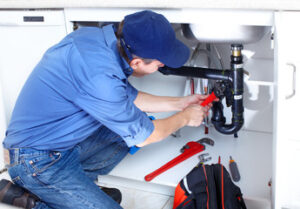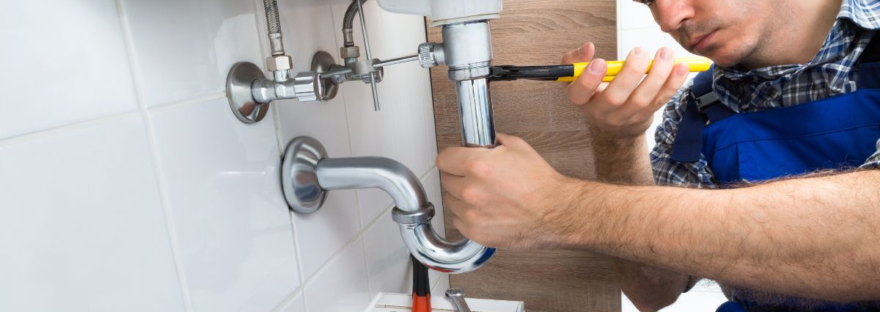When a plumbing emergency occurs, it’s essential to act quickly. Leaving your emergency plumbing issues unattended can lead to severe water damage, fire hazards, and mold problems. To help you find a reliable emergency plumber, visit https://www.apexdoyourplumbing.com/.

Sewer backups are the plumbing problem that generates the most emergency calls for homeowners. A sewage backup can contaminate the household water supply with dangerous bacteria and cause serious illness to family members and pets. A backup in your home’s waste line can also lead to severe flooding and expensive property damage. The good news is that many of the reasons for a sewer line backup are preventable.
Your home’s sewer line is what carries away wastewater from all the drains and toilets in your house. It takes the waste to your septic system or public city connection. Any type of blockage in your sewer line can lead to a sewage backup, which is a plumbing emergency that requires immediate attention. The most obvious sign of a sewer backup is a smelly, sludge-like water bubbling up out of the toilet or other drains in your home.
If you notice this issue, it is important to shut off your home’s main water valve as soon as possible. This will stop the flow of sewage and water into your house and help minimize the extent of the damage. It is also wise to use a face mask and protective eyewear when entering areas of your home affected by a sewer backup.
A professional plumber will evaluate the problem and determine the source of the clog. In some cases, a simple drain auger or cable machine will be enough to dislodge the clog and get the line flowing freely again. If the clog is caused by tree roots or other issues that require more extensive repairs, an expert will assess the situation and recommend a solution such as hydrojetting or pipe lining.
In other cases, a sewage backup may be a result of a public sewer problem. Heavy rains can overload public sewer lines, and the excess sewage may flow into homes through basement drains. If this is the case, you will need to contact your local city officials as soon as possible.
Burst Pipes
A pipe burst can turn your calm evening into a chaotic mess. Water gushing from a broken pipe can flood your home, ruining your belongings and potentially damaging your home’s structure. You can minimize the damage by acting quickly to call emergency plumbers. You can also prevent pipe bursts by taking precautionary measures.
If your pipes burst, you should first turn off the main water valve. This is usually located near the water meter or where the main line enters your home. Next, you should remove any items in the area of the break and address any puddles. Puddles can leak into other areas of your home, causing additional damage and making mold and mildew more likely to grow.
You should also try to prevent pipe bursts by insulating your pipes. This is especially important if they run through cold areas of your home or along exterior walls. You can also use a repair sleeve to temporarily fix a burst pipe. This sleeve is similar to a pipe tap but works only on water pipes. It is easy to install and only requires a wrench. However, it is not a permanent solution, so you should still call an emergency plumber to fix your burst pipe.
Before calling an emergency plumber, you should take the time to research potential candidates. You can do this by asking for recommendations from family and friends or checking online reviews. You should also make sure to check the plumber’s credentials by contacting their previous customers. You should also check whether they have the necessary certifications and insurance to work on your plumbing issue.
It is also a good idea to ask for a quote before hiring an emergency plumber. This will give you an idea of how much the service will cost and help you avoid overpaying. A professional emergency plumber will always provide a fair and honest quote. In addition, he or she will be able to resolve your plumbing emergency in the most effective and efficient manner. In order to find a qualified emergency plumber, you should consider using Angi, which connects you with certified professionals who are experienced in handling a variety of plumbing issues.
Frozen Pipes
Pipes freezing is a common issue for homes and businesses in cold climates. The problem is more serious when pipes are exposed to extreme temperatures and lack insulation. When this happens, the water inside them will expand and may cause the pipes to crack or burst. A professional plumber will quickly thaw frozen pipes and implement preventative measures to protect them from future damage.
Frozen pipes can disrupt your normal flow of water, which will affect showers, washing machines, and other appliances that use water. You may also notice limited water availability or hear dripping or banging noises coming from your home’s plumbing. The best way to know if your pipes are frozen is to check the faucets and look around for signs of water accumulation. Other symptoms include frost or water stains on the outside of your pipes, low water pressure, and a gurgling sound that indicates water is traveling through ice.
While you’re waiting for the plumber to arrive, you can try to thaw the pipe by applying heat. Wrapping an electronic heating pad or using a hair dryer can help, but you should avoid using open flame or other harsh methods to prevent the pipes from bursting. You can also try soaking towels in hot water or running a stream of water over the frozen area. Always remember to keep the faucet for the affected pipe open, as this will ensure water and steam can escape during the thawing process.
If you can’t find the source of the problem or if the frozen pipes are in hard-to-reach locations, it’s best to call an emergency plumber right away. They’ll have the tools and experience needed to safely thaw the frozen pipe while protecting the rest of your plumbing system.
Frozen pipes can lead to significant water wastage and a rise in your utility bills, so it’s important to act fast. A professional plumber will minimize the impact of this issue, helping you save money on your bills while promoting water conservation. This type of action is also good for the environment.
Water Leaks
When water leaks occur, it’s important to find and call an emergency plumber right away. This is because water damage can cause serious structural problems, not to mention mold growth. Emergency plumbers are trained to quickly and accurately identify the source of the leak and fix it before the problem worsens.
Leaking faucets, showers, and toilets can seem harmless enough, but they waste gallons of water and lead to high water bills. Additionally, they can damage walls and flooring and contribute to water pollution. If ignored, they can even cause flooding. In most cases, a quick fix is all that’s needed to avoid expensive repairs and water damage.
Water leaks are one of the most common plumbing emergencies. They can be caused by a number of issues, including faulty fixtures and aging pipes. Many signs indicate a water leak, such as unexplained high water usage, damp spots on walls and ceilings, and a sudden drop in water pressure.
The first thing to do if you think you have a water leak is turn off your home’s main water valve. This will stop any further flow of water and prevent further damage. You should also open all drains and spigots to release any trapped water. Next, assess the damage. Look for any new water stains, damp spots, warped floors, or peeling paint. Take pictures and write down what you see so you can describe it to your emergency plumber.
When looking for an emergency plumber, it’s a good idea to ask friends, family members, and neighbours for recommendations. This will help you find someone who’s trustworthy and reliable. You should also check online reviews and compare prices to find the best deal. Once you’ve found a few potential plumbers, ask them for references and check their credentials.
A plumbing emergency can strike at any time, so it’s important to know the signs so you can call for help immediately. By understanding what qualifies as a plumbing emergency, you can save yourself some stress and money in the long run.




